










John Deere Financial’s finance and credit products are provided in association with Stanbic Bank. *Terms and conditions apply (please follow the link to view applicable T&C’s: https://www.deere.africa/en/finance/financing/). All advertised deals are subject to credit approval and the financing bank’s terms and conditions.

The emerging farmer is the future of agriculture in Africa. This is evident due to the fact that emerging and small-scale farmers represent the largest segment in the African agricultural industry. We recently attended the Agritech expo in Zambia, and it was evident to me that the young people have a passion for agriculture, and an entrepreneurial spirit that drives them.
Like any other business, they have to start with the capital and resources that they have available, but their aspirations are to employ more people, produce more agricultural products, and make more profit. The challenges that they face are access to resources such as business loans, and secondly the knowledge and expertise required to farm on a more commercial level.
Over the past two decades, commercial agriculture evolved to become more precise and more scientific than ever before. Anyone who wants to farm on a commercial scale needs to understand this and have the knowledge and support to be able to compete.
The good news is that there is an increasing awareness of the emerging farmer segment among the large agricultural corporations. Companies are reaching out in various ways.
Running a successful farm requires that many facets of the farm work together like a well-oiled machine, and when that happens it is one great pleasure. On most farms the farmer is the owner and key manager in the business; along with this, he fulfils the role of a scientist, human resources manager, legal expert, marketer, trainer, botanist and zoologist, veterinarian, researcher, and many more.
Over the past decade, the agricultural sector has changed a lot, and the complexity of farming business has increased tremendously. You cannot just claim all the different titles; you have to hold a candle to the best experts in each department.
The ProAgri team's aim and goal is to be the link between the farmer and the experts.
We hope that you find what you are looking for in our brand new ProAgri BNZ edition. Remember to visit our informative websites and YouTube channel for more.
Take care and stay warm this winter!
ProAgri-greetings!
Bianca Henning bianca@proagri.co.zaThere’ is much more to Agrico than only irrigation systems. Agrico is proud to launch their brand-new High-Speed Disc, which works 8 metres wide! The HSD operates at up to 16 km per hour — almost twice the speed of a traditional disc harrow. Read more on page 3.
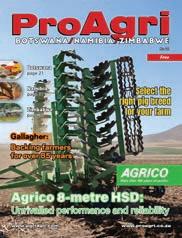

577 Rossouw Street, Die Wilgers, Pretoria +27 (0)79 515 8708
www.proagri.co.za
Copyright © 2023. All rights reserved. No material, text or photographs may be reproduced, copied or in any other way transmitted without the written consent of the publisher. Opinions expressed are not necessarily those of the publisher or of the editor. We recognise all trademarks and logos as the sole property of their respective owners. ProAgri shall not be liable for any errors or for any actions in reliance thereon.
Editor Bianca Henning >
Reporters
Benine Ackermann >
Maryna Steyn >
Natasha Pansegrouw>
Specialist Writer
Annemarie Bremner >
+27 82-326-2572
bianca@proagri.co.za
+27 73-105-6938
benine@proagri.co.za
+27 82-261-9177
maryna@proagri.co.za
+27 81-736-4236
natasha@proagri.co.za
+27 82-320-3642
annemarie@proagri.co.za
Client Relations Manager
Carin Swartz >
Marketing Manager
Diane Grobler >
Marketing
Xander Pieterse >
Johan Swartz >
Tiny Smith >
Lynette van Tonder >
Agrico High Speed Disc: Now 8 metres wide!
For over 85 years, Gallagher has been protecting farmers' assets
Choose Senter360 for local quality
Farming with nature: Drought mitigation
Pig breeds Part 1: Southern African pig breeds

Fruit production Part 5: The cape gooseberry is a golden crop
Apimondia: For the love of honeybees

Herb and spice production Part 4
Financial literacy in agriculture – Part 1
Manage your cattle’s grazing better for a higher production rate

Snail production – Part 1
Game ranching Part 2: Placement of watering points
Beekeeping part 10: Harvesting and marketing of honey
Automated irrigation empowers African farmers
From silkworms to silk garments Part 4.1: Silk reeling methods

Technews: The latest in agricultural technology from around the world


Creative Director
Christiaan Joubert >
Design
+27 84-233-0123
carin@proagri.co.za
+27 82-555-6866
diane@proagri.co.za
+27 79-524-0934
xander@proagri.co.za
+27 71-599-9417
johan@proagri.co.za
+27 82-698-3353
tiny@proagri.co.za
+27 74-694-4422
lynette@proagri.co.za
+27 72-419-3990 christiaan@proagri.co.za
Michelle Kruger Jamie-Lee Tromp
Enquiries
Engela Botha >
+27 12-803-0782 engela@proagri.co.za
Distribution and subscription
Nita Volmer-van Zyl >
Accounts
Ronel Schluter >
Business Manager
George Grobler
+27 79-515-8708 nita@proagri.co.za
+27 12-803-0782 accounts@proagri.co.za
Namibiese Reg. N-AR 2162 Reg. Nr. L10856, Wet Nr. 36 van 1947
Reg. Nr. L10856, Wet Nr. 36 van 1947 Reg. Nr. L10856, Wet Nr. 36 van 1947




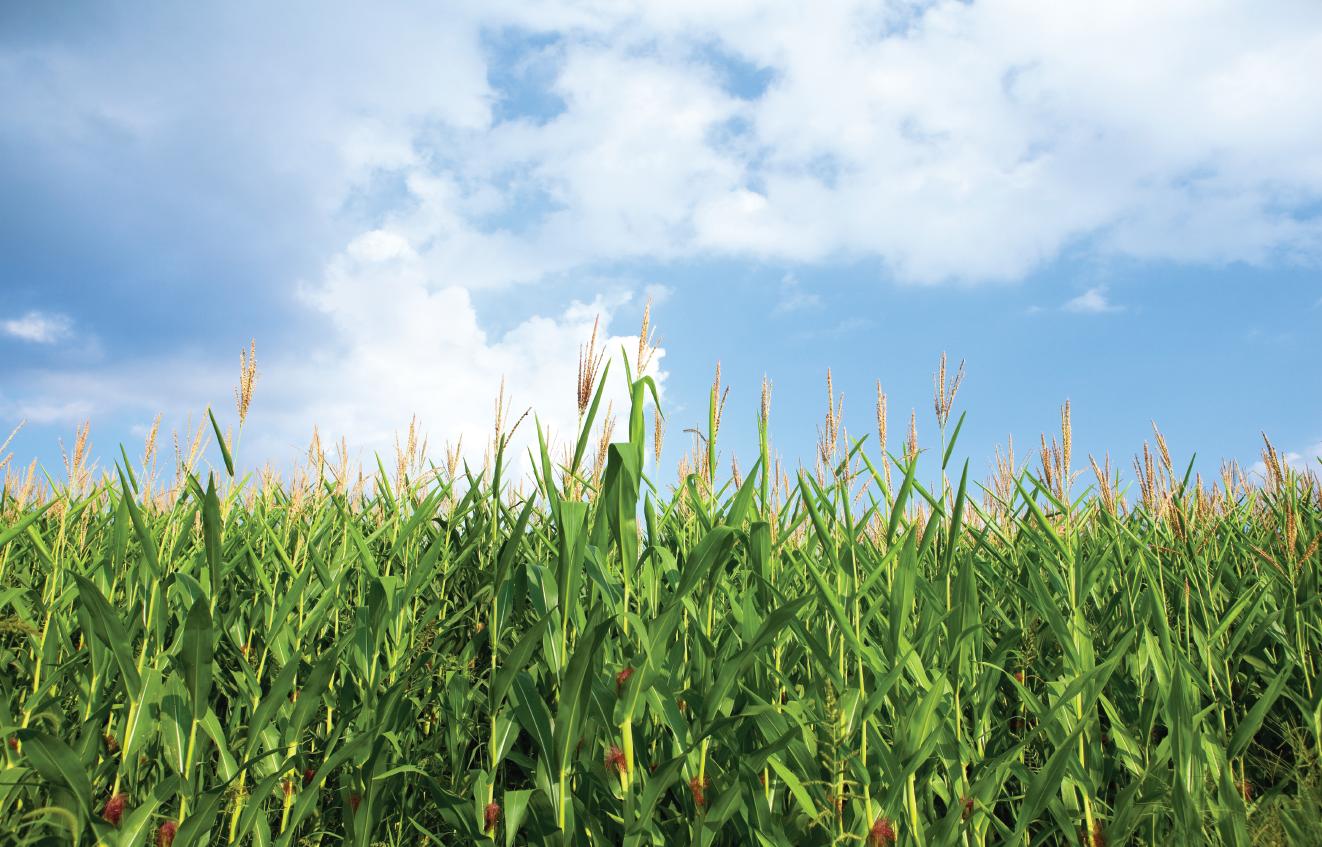


Namibiese Reg. N-AR 2162 Reg. Nr. L10856, Wet Nr. 36 van 1947

 by Bianca Henning
by Bianca Henning
F arming is a complete joy when, looking for a tool for a specific task, you find one that exceeds your expectations, supported by a manufacturer that understands Southern African farmers' needs. Agrico has perfected this experience with their HSD630 (High Speed Disc).
Agrico built their first HSD in 2017. The first models introduced to South African farmers, with widths of 2,5, 3,2 and 4 m, respectively, soon became big hits in the industry. Soon after, the 5 m followed, as well as a 6,3 m model. Now the Agrico team has moved to create the largest HSD yet, with a 8,0 m width.
How does the Agrico HSD compare to a traditional disc harrow?


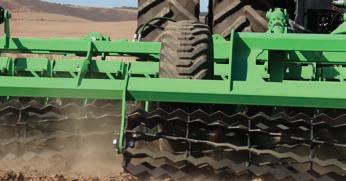
A farmer’s greatest need is to work as efficiently as possible. With labour and fuel costs prohibitively high, it is important to get the most from every cent.
The HSD operates at up to 16 km per hour — almost twice the speed of a traditional disc harrow. This means that with almost the same kilowatts, same diesel consumption, and in the the same time, you can cultivate twice as many hectares.
“Farmers in Southern Africa are some of the most innovative in the world. They are completely reliant on themselves to achieve success," says Johan Myburgh, Head Mechanical Engineer of Agrico. "It is essential that farmers work as efficiently as they can and plant as close as possible to the ideal time. At times, preparation must be done within a short window of time," he adds.
“With rising costs, farmers tend to switch to bigger tractors and bigger implements. Big machinery requires less labour, less maintenance, and gives the farmer better control. Farmers want to get through their hectares as fast as possible, and cultivate more hectares with less equipment," says Johan. "This is precisely where the need for the 8 m HSD arose. We have had great success with the 2,5 to 4,0 m discs that are already on the market."
The design process of the 8 m HSD
Cornel Fourie, Mechanical Design Engineer at Agrico and chief designer of the
8-metre HSD, says that the design of the new tool is based on that of its successful predecessors.
"The concept for the first HSD with a folding frame (the 6,3 m model) was finalised in 2020. The 8 m model is just an extension of the 6,3 m, so the design took less time as much of it was already in place. The two larger models go hand in hand with each other," says Cornel. The Agrico team completed the design in an impressive nine months. The development was led by Cornel, with assistance from Johan's side together with the production team, under the direction of Johan Kershoff.
Key features of the Agrico HSD
• The frame is foldable with hydraulic control for easy transport.
• The disc is trailed, and not mounted on the tractor's three-point like the smaller models.
• The unique design of the larger discs and spacing of 315 mm between them provides cost-effective operation with very good material flow.
• Fifty-four 630 mm diameter chopped discs reduce wear.
• Improved material flow is achieved with the help of the smart design and optimal spacing of the chopped discs.
• A robust frame ensures a durable tool with an extended life.
A tractor of 200 to 280 kW (depending on the ground conditions) must be used in front of the 8 m HSD. The implement works between 14 and 16 km per hour, and up to 160 mm deep.
"I think the big secret of the HSD's success is the aggressive angle at which the discs operate and the rubber springs to which they are attached," says Cornel.
"The springs protect the discs, frame, and bearings. If a disc hits a stone, it breaks away and resets itself immediately. The work can continue uninterrupted and without damage."
In addition to the smart discs and robust structure, the rear roller with which the working depth is set, helps to round off the seed bed and mix the topsoil perfectly.
The new HSD is currently being tested in the Free State and will be introduced to farmers for the first time at this year's NAMPO.
Agrico focuses on moving forward with their customers. They understand the needs of Southern African farmers and their implements are manufactured locally to fit farmers' needs exactly.
"The requirements of tools in Africa are different to those of Europe. We know African conditions and know the challenges of the farmer. Cornel and I both drove a tractor even before we could walk properly," concludes Johan with a laugh.
Buy
local. It is affordable and designed for Africa.An Agrico HSD has a robust frame and rollers, suitable for any African conditions.
Asmooth management system is essential for every livestock farmer. Thanks to Gallagher's modern technology and solutions, their products make the farmer's life easier and safer. The company offers a wide range of products and services designed to help farmers manage their livestock more efficiently. The products include electric fencing solutions, weighing and EID (electronic identification) systems, pasture management tools, and animal water systems.
Electric fences
Gallagher's electric fence systems are designed to keep animals safely inside. They offer a wide range of amplifiers, conductors, insulators, and accessories
to help the farmer to precisely match his needs. The advantages of electric fence systems include lower cost, easy installation, and more flexibility in animal management.

Electric fences solve the issue of wildlife conflict and help keep wildlife out of areas where they can cause crop damage, thereby reducing the need for harmful wildlife management practices.
Scales
Gone are the days of guessing. With Gallagher Animal Management's weighing scales, a farmer can now determine exactly whether his livestock convert the feed and pasture he gives them into good and rewarding growth. Gallagher's scales are affordable, reliable, easy to use, and thoroughly worth their
money. Gallagher's weighing scales are a useful management tool when you are standing next to the crush. You do not have to rummage through papers, you have instant access to the data on your phone.
"Gallagher's scales are one of our most popular products," says Mark Smit, Sales Manager of Gallagher SA's animal management department.
"This is the way in which farmers monitor their livestock's growth and performance over a period of time, to make timely adjustments if necessary. As the animal is weighed with its specific number, it is immediately displayed on your phone. You can also make adjustments, change information, and view the data in graph format," explains Mark.

Gallagher's scales have a robust design, are waterproof, sealed, and dustproof, and register weight in kilogrammes and pounds. The display's numbers are also large and in colour for easy reading.
Gallagher also offers wireless scales, which are connected via a bluetooth connection. It is easy to move from one place to another, with your data all stored in one place in the cloud. The bluetooth connection sends your animals' weights straight to a Gallagher TW or TWR scale - doing away with the frustration of traditional loading bars. Compatible scales are the TW-1, TW-3, TWR-1, and TWR-5.

Wireless water monitoring
Gallagher also offers a range of useful water management solutions that make the farmer's life easier and his animals' life more enjoyable. This includes things like automatic water markers, troughs, and pumps. Gone are the days of uncertainty about your water levels, worries about your livestock not having enough water, or hidden water leaks.
Gallagher's wireless water monitoring enables farmers to monitor tank levels



so you can determine with certainty how much water you have available. The biggest advantage of the system is that farmers do not have to go out early in the morning or late at night to check their water levels. They can do it safely from their homes. It also gives you all the information such as the water consumption, tank levels and automatic pump control. The farmer is also warned in time if water levels drop.
What does wireless water monitoring include?
• Monitor up to nine tank levels
• Control up to two water pumps
• Measure water consumption
• Analyse water consumption to prevent wastage and know immediately if there is a water leak
• Send notifications and alerts through the touch screen receiver or mobile application.
Gallagher's mobile application enables you to manage the water levels of your ponds or tanks conveniently from your mobile phone.

Gallagher is on the farmer's side, which is why they offer solutions that are cost-effective, easy to install, user-friendly and make the farmer's life easier. No wonder they have been market leaders in the field for the past 85 years.
For more information, visit Gallagher's website at www. gallaghersa.co.za, or contact them on +27 11-974-4740, or send an e-mail to sales.za@ gallagher.com. Their products are also available from cooperatives and other distributors.





AtSENTER360 we are proud to not only supply products, but build long-term relations with our clients by delivering a package of high-quality products and excellent service. The SENTER360 centre pivot, manufactured since 1994, is known for its excellent quality and strength above industry standards. We have been part of the irrigation industry for more than 25 years and have interests in South Africa, Africa and in the rest of the world.
We are passionate about our centre pivots. We do not only build a tough, extremely strong structure but also give attention to small details to make a big difference in your everyday life.
SENTER360 tower trusses are manufactured from pipe and not angle iron as is commonly used by other brands. The advantage of the lighter and structurally stronger material enables us to use two more sets of trusses per tower than is possible with angle iron trusses, ensuring an exceptionally strong structure. An added advantage of the pipe truss structure is its aerodynamic superiority above angle iron as a structural material. That is the reason why a SENTER360 machine can withstand a windstorm of 158 km hour (actual field data) without any damage. This claim is borne out by the fact that no SENTER360 was blown over in the recent storms (the only brand not to topple over).
Firstly, the pipe structure, but also the standard long base beams, sturdy tower supports, stabilizing rods, diagonals, and a low centre of gravity, all contribute to the exceptional stability.
The same modular principals used throughout the entire SENTER360 design is also visible in our control panel design. Our entry level control panel is similar in functionality to the top panels of most other brands.
Standard functions include:
• on/ off
• feedback when the machine stops
• direct water application adjustment
• showing the position of the pivot
• low pressure stopping and pressure starting
• part circle and sector adjustment with variable water application per sector
• sector control of the end water cannon
• auto-reverse with variable water application on return
• pre-programmable scheduling options
• and many more!
All new and old** SENTER360 panels can be controlled by your cell phone*, tablet*, computer or base station by adding a simple plug-in communication unit of your choice, such as GPRS/cell network, Wi Fi, or radio unit.
Full pump control, VSD control and feedback are also available on the same system. New panels have full function internet controls, record keeping, and graphs.
*Android, IOS and other **Older panel controls are limited to on/off, direct water adjustment, run
and stop feedback communication.
Last sprinkler solutions
One of the common problems with centre pivot irrigators is the regular blockage of the last nozzle. We have solved this problem in a simple innovative way, constantly keeping the last nozzle clean throughout the irrigation cycle.


SENTER360 centre pivots are equipped as standard with high quality, high performance Komet Twister sprinklers operating at 10 psi (0,7 bar) or optional 6 psi (0,42 bar), mounted on drop pipes. This top-quality product ensures outstanding water distribution, even in trying climatic conditions.
The standard drivetrain of a SENTER360 centre pivot is made up of heavy-duty wheel gearboxes, driven by a 0,56 kW (40:1) motor gearbox combination (30:1 and others are optional.) An optional five-year extended warranty is available (T’s and C’s apply).











































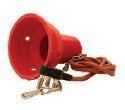
In the face of an extreme drought that has devastated large parts of the Karoo, including the Klein Karoo, it is important for farmers to learn how to mitigate the extreme conditions exacerbated by climate change, and to save their natural pasture.
A workshop where these mitigating principles were discussed, was presented by Sarah Cromhout of the Herding Academy, in conjunction with Dr Chavoux Luyt of the Cape Leopard Trust.
Seven participants, including commercial farmer, Herman van der Walt, conservationist, Louis Jordaan, Tembelihle Mjamba from CapeNature, Jan Jordaan of the National Wool Growers Association (NWGA), and smallholders Bridget Lloyd, Sally Adams, and Sue Harris, attended the workshop at Bella de Karoo guest house between Oudtshoorn and Calitzdorp.
The Herding Academy is a holistic
by Tisha Steynlearning centre where the ancient skill of herding animals is applied within a holistic decision-making framework to regenerate the landscape and bridge the socio-economic and cultural barriers between humans and wildlife throughout Southern Africa.
The Academy, which is based in Graaff Reinet in the Eastern Cape, endeavours to revive the skills of herding livestock to mimic the effect of migratory wild herds of antelope that once roamed the land, to the benefit of the ecosystem.



The CATHSETA-accredited courses are presented by trained professionals and herders who provide practical holistic insight to landowners and student employees, and provide practical herding training to rural and communal stock farmers through short courses.

The course outline usually focuses on teaching both theory and practice to address the ever-changing environmental and social challenges.
The course is based on the approach of Allan Savory, the father of regenerative farming, who states: “No individual parts exist in nature, but only wholes, and these form and shape each other.”
Holism includes four aspects: a holistic approach, the brittleness of the landscape, the predator-prey connection, and time. All the parts of the farming system and nature are closely related and every decision that is made has an influence on something else.
Ecosystems, which include farming systems, are rated on a scale of brittle to average or normal. When the ecosystem is brittle, it is subjected to erratic rainfall and an unpredictable climate. When it is normal, there is little variation between the years and seasons, high biodiversity, and predictable climate.
It is crucial to understand the brittle -
ness scale of land, which indicates the way it responds to different influences, such as the annual humidity, or the lack thereof, throughout the year. A dry landscape is more brittle or fragile and may deteriorate far quicker than a resilient landscape where the annual rainfall is higher, and the veld responds quicker.
In brittle systems, the duration of grazing and the mowing effect thereof is more important than the number of animals grazing it. This must be managed to prevent overgrazing.
Plants and animals evolve together, and it is necessary to understand the predator-prey connection to the health of the land in brittle environments. In more brittle environments pack-hunting predators result in large herbivores moving in herds.

Prey-predator interaction has an important influence on naturally brittle
systems, and the interaction can be used to mimic the mowing (grazing) and trampling (hoof action) effect of a herd.
Time, and not the number of animals in the landscape, governs the health of the rangeland. Plants need time to recover once they have been disturbed by grazing and the hoof action of the animals grazing it.

“Eco-processes form part of ecoliteracy, which is how we read the landscape,” says Sarah. “These are also linked to each other and cannot be looked at individually.”
Four eco-processes are fundamental to all ecosystems: the water cycle, mineral cycle, community dynamics, and energy flow.
• The water or hydrological cycle refers to the movement of water from the atmosphere to the soil or oceans and through plant and animal life before it returns to the atmosphere.
• The mineral cycle refers to the movement of minerals from the soil to the plants growing in it, to the animals that eat the plants, and back into the soil again.
• Community dynamics, or succession, is the constant state of flux within a biological community. This includes the ever-changing composition of a landscape, the elements in the micro-environment, and the interplay of plant and animal species.
• Energy flow refers to the sun’s energy that allows green plants to grow through photosynthesis into the food that fuels all life.
The context should include these four processes and how the farmer wants these processes to look on his land.
“Good management means we base our decisions on the context. The tools available to us depend on human creativity, money, and labour,” says Sarah.
A context description is fundamental to managing complexity as it shapes and informs decision-making toward a preferred future outcome. All conflict has a common origin, which includes that which is being managed, the people involved, the aim of the action, what we need to understand to manage, and what resource base and money are available to do it.
Management tools for effective impact on the veld include:
• technology,
• resting of the veld,
• biodiversity, namely the variety of living organisms in an ecosystem,
• a grazing plan for the pruning effect and hoof action of a herd, and
• fire with controlled burns and a fire plan.
The main principles of drought management include:

For grazing, it is important to know the critical dates such as the changes of seasons so as to know when the veld is ready to be utilised.
It is crucial to adjust the stocking rate to the carrying capacity, even if it involves reducing herds to breeding animals during a lengthy drought.

It is equally important to use longer
rest periods for the veld to allow it to recover completely. Rather combine herds to reduce the grazing period of a veld, especially if the veld is more brittle due to drought.
Plan, and replan cash flow, as well as stock flow. It is essential to estimate in advance whether feed will be available, and plan destocking in time. “Never, ever drought feed,” she says.
It is important to plan long-term water availability to take care of the land to the best of your ability. Also, ensure that your farming includes various income streams compatible with risk. “One must manage for a healthy, diverse, and perennial pasture.”
Bridget Lloyd farms Meatmaster sheep on a smallholding of 18 ha at Noll’s Halt about 30 km from Uniondale.
“Everything revolves around grazing for the sheep,” says Bridget. “I have been trying to do it regeneratively with no artificial fertilisers, pesticides, using mixed cover crops rather than monocrops. I use minimal tillage and restore the veld – no-till planters are costly, and I can’t afford them. But I am already seeing a difference!”
According to Bridget, she has been following the Herding Academy ‘from afar’, but their executive land management courses were too expensive to attend. “I booked as soon as I saw the workshop advertisement. I have heard some of the information presented by following the Academy, reading articles, watching videos and documenta-
ries, and YouTube clips. But I will most definitely benefit from the workshop as it makes the information more tangible having it explained with concrete examples.
“Being on a smallholding makes it more challenging than on a large farm, but I have already been walking around, looking at what I can apply and use and adapt for my circumstances.”
She will be interested in joining future workshops. “I took two friends along and they are also interested. I would also take Aubrey, the guy who works part-time on my farm, as I think he would also benefit.”
A Large White boar ensures uniformity and quality in pigs from almost any dam. (Source: petpigworld.com)


Acrucial factor in any farming operation is the market. If you cannot sell your product, all your efforts are to no avail. It is important to think about whether or not you have a reliable customer base before starting a pig breeding business.
It is also important to have a good understanding of the market demand for pork products in your area.
Additionally, you should have a solid business plan in place, that outlines your breeding goals, marketing strategies, and financial projections. With careful planning and hard work, a pig breeding business can be a successful and profitable venture.

Having a reliable customer base is crucial for any business, including pig
Large White sows have a well-deserved reputation for being excellent dams. (Source: morningchores. com)
breeding. Without customers, there is no demand for your product, and your business could fail. In the case of pig breeding, it is essential to have a clear understanding of who your potential customers are and what their needs and preferences are. This will help you determine the number of pigs to breed, the type of breeds to focus on, and the best marketing strategy.
Around the 1890s, this English breed made its way to South Africa. It is a big, white breed, as the name suggests, so its litters tend to be big and healthy, and they grow quickly and consume food efficiently for their size. Large Whites are easily identified by their white colour,
The Landrace pig is characterised by a particularly long body and lop ears, and it is white. (Source: upperhandgenetics.com)

pink skin, long, deep sides, erect ears, slightly dished faces, and picturesque bearing.
Some lines mature late, at seven or eight months, but this does not affect their usefulness as mothers or workers. They have large, healthy litters and make excellent protective mothers, leading to young with rapid development and high feed efficiency. As a result, they are the gold standard of dual-purpose breeds. In general, boars are reliable workers. Bacon-type offspring can be expected from a cross with virtually any purebred animal. When crossed with the Landrace, the Large White proves to be a universal foundation mother breed that gives rise to fertile F1 (first crossbred generation) female stock.
The Large White is known for being a tough and resilient breed that can thrive in a wide range of conditions. Their ability to cross with and improve other breeds has truly made them a factor nearly everywhere commercial pigs are produced. They have been a staple in the market for decades because they produce such high-quality bacon and pork. Their tendency to grow and not lay down excess fat has made them favourites, not only when pigs are marketed at relatively light weights but also when they are marketed at heavier weights.
The Landrace originated in Denmark by mating domesticated pigs with Large Whites. In 1952, they were first brought in from the Netherlands to South Africa. The improved Landrace is a mothering breed that has been praised for their consistent delivery of large litters over extended periods of time, in addition to their economic production attributes (weight gain and feed efficiency). The Landrace pig is a white breed distinguished by its long body, lop ears, light forequarters, well-defined back, and large hams. This breed is also known for its docility and manageability.
tural integrity. The sows are commonly used as a mother line when crossing with Large White or Landrace pigs because of their adaptability to extensive and semi-intensive systems. The breed is robust and does well in extensive conditions despite its medium size compared to other local breeds.
Appearance-wise, they are perfectly proportioned, broad, well-balanced, and of high quality. Body depth is greater than in most other breeds. The hair is usually not overly wavy or straight. They have a thick, durable hide that does not cling too closely to the body.
The colour of Duroc can be anything from an extremely light golden, almost yellow hue to an extremely dark red that resembles mahogany.

(Source: upperhandgenetics.com)
leanness at larger sizes for the abattoir (105 to 120 kg). Good-quality carcasses without the red or red-black hair follicles found in the pure breed are the result of a terminal cross. The Duroc is used to produce terminal hybrid sires and synthetic sires due to the breed's many desirable characteristics.
The Chester White is a versatile breed because of its medium size, sturdy build, and ability to work.
(Source: upperhandgenetics.com)
The Duroc
Landrace sow has excelled as a universal foundation mother breed.


(Source: upperhandgenetics.com)
The breed shows a high rate of growth and low feed wastage, while the improved variety is praised for its highly fertility, superior mothering qualities and consistently large litter sizes. Their value lies in the fullness of their rounded hams and the length of their bodies relative to their bone structure and fat content. They show positive characteristics like a high proportion of lean meat, the absence of fat, and fine bone, as well as a small head, a short neck, and light shoulders. Less noticeable hams and a decrease in the breed's traditionally high proportion of lean meat followed the eradication of the MH-gene.
This American breed developed from the interbreeding of pigs from the Yorkshire and Lincolnshire regions. In 1983, the first Chester Whites arrived in South Africa from the United States.
The white-skinned boars of this breed are robust and well-adapted farm animals because of their size and struc-
This rusty-red coloured breed originated in the United States from four strains of red pigs. It was first imported into South Africa from Canada in 1980, to make available a third breed, primarily for crossbreeding purposes. When crossed with traditional white breeds, these boars with their high libido are known to produce offspring with superior growth rates, feed efficiency, and meat quality.
The modern Duroc, with its breed-defining characteristics, excels as a terminal sire. Crosses between Duroc boars and standard white breeds result in pigs with superior growth, feed efficiency and

The Duroc breed is known for producing exceptionally marbled meat compared to other breeds, which makes it the best of the breeds. The sows are considered to be excellent mothers despite having large litters. The breed is not very susceptible to stress. Inherited coloured hair follicles cause issues at the abattoir during hair removal if offspring inherit more than 50% of the Duroc genes.
References
Pig Farming in South Africa. (2022). Available at: https://southafrica. co.za/pig-breeding.html
Breeds of Livestock - Breeds of Swine, Department of Animal Science. (1996). Available at: https:// breeds.okstate.edu/swine/index.html
Pig Breeders Society of South Africa. (2023). Available at: http://pigsa. co.za/
Duroc sows have large litters, they are thought of as excellent mothers. (Source: commons.wikimedia.org)
The sweet cape gooseberry is gaining popularity due to its high value as the next big superfood. Its name is derived from its look, as the ripe fruit looks like it is wrapped in a paperlike “cape” that resembles a Chinese lantern.

A multitude of varieties are available. They differ in colour, size and shape. It is, however, important to note that the cape gooseberries are a completely different species to regular gooseberries.
Originating from Peru, the cape gooseberry (Physalis Peruviana) is part of the nightshade family such as tomatoes, peppers and potatoes.
Immigrants introduced the cape gooseberry to Southern Africa in the 1770s. Today, South Africa’s Western Cape and Northwest provinces are some of the largest local producers.
Columbia dominates the international market because the input costs are so low and it can be produced on small scale by family farms, which means that you can invest in your own cape gooseberry production, especially since setting up a production system is so
affordable compared to other berry crops. Within the first 100 days of being planted, these berries start to produce a crop. This means that there is a fairly quick return on investment.
The fruit is sweet, nutritious, and has a high market value. Part of what makes these berries so healthy is that they are high in fat. It may sound strange to think that fat is healthy, but it enables the fruit to carry fat soluble vitamins such as vitamin A, D, E and K. It also contains betacarotene, calcium, copper, magnesium, manganese, iron, phosphorus, potassium, bioflavonoids, protein, and fibre. No wonder it is viewed as the next super food!
Cape gooseberries are used to make jams or juice, but they can also be dried, cooked or consumed raw.


These plants are relatively hardy. They can survive temperatures of -4 °C,
by Maryna Steynand recover quickly from frost. Young plants, however, dislike frost. The ideal climate for these berries range between 10 and 25 °C.
Arid to semi-arid areas are best for your cape gooseberry farm as they prefer full sun and warmth all year round.
The soil pH level needed for these fruits is between 5,5 and 7,0. One of the benefits of planting cape gooseberries is that they grow extremely well in poor soils. Higher soil fertility may result in unnecessary vegetative growth – too many leaves and stems with no significant improvement in fruit yield.

The berry is also drought tolerant, but this characteristic also means that it does not fare well when it is waterlogged. To avoid this, start your soil preparation by preparing a fine soil bed.
Mix in the residue from the previous
crops with a fork. Use a disk to improve the aeration of the soil and distribute the organic matter throughout the seedbed. Break up any clods. Soil preparation should be aimed at improving the drainage of the soil and reduce compaction.
Soil preparation needs to be done between 200 and 400 mm deep to assist optimal root growth. Create ridges in the seedbed, approximately 600 mm wide.
Farmers usually plant seedlings rather than cuttings. This is more effective and affordable. Seeds can also be planted
directly into the soil, but planting seedlings gives your plants the best chance for survival. You can make your own seedlings, or buy them from a trusted vendor or nursery.
Cape gooseberry is a shrub that grows to a metre high. That means that you need space for it to grow. Larger plants can even grow up to a metre wide in some cases.
Space plants 0,75 m apart. You can place rows approximately 2,2 m or up to 2,8 m apart. This will entirely depend on whether you will need machinery to fit in between the rows or not.
Plant density can vary between 4 000 and 6 000 plants per hectare, depending on the size of land you have available. You can expect that a healthy plant will produce approximately 300 berries in its lifetime.
Cape gooseberries are water wise plants. They do not require a lot of water, in fact, only 800 millilitres of water a day.
The plant does need consistent watering during the growing season to set a good fruit crop. Irrigation can be reduced when the fruits are maturing. The plants become dormant during drought.
You can water the plants twice a week in hot months to ensure the soil is moist, but avoid over-watering by checking the soil moisture before watering. Irrigate close to the soil and avoid watering the leaves as this can lead to pests and disease.
Another benefit of cape gooseberry production is that there is no need to fertilise the crop at all. This saves you input costs on fertiliser as well as labour. Where necessary before the next crop, you can correct the pH level of the soil.
The main threats to cape gooseberry production are cutworm and caterpillars. Inspect your crop regularly to act early. Insecticides can mitigate the effects of these pests if you discover an infestation.


The plants bear fruit 4 to 5 months after being planted.
Harvesting is done by hand when the golden berries are ripe. Berries should not be picked before then, as they stop ripening once picked. This can affect the taste.
Prune any dead vegetation after the first harvest.
Sources:
Cape gooseberries: The next big superfood trend? (2019) Magzter. Farmer's Weekly. Available at https://www.magzter.com/stories/Business/Farmers-Weekly/ Cape-Gooseberries-The-NextBig-Superfood-Trend


Commercial gooseberry farming (2022) Berries for Africa. Available at https://www.berriesforafrica.co.za/commercial-gooseberry-farming/
Gardenate - growing Cape Gooseberry ( 2012) Gardenate. Available at https://gardenate.com/plant/Cape%20
Gooseberry?zone=
Kriel, G. (2023) Cape gooseberries: Fruit farming in South Africa, South Africa Online. Available at https://southafrica.co.za/ cape-gooseberries.html
The third African Regional Apimondia Symposium (ARAS 2023), hosted by the SA Bee Industry Organisation (SABIO), took place at the International Convention Centre in Durban from 22 to 24 March.

Apimondia is the International Federation of Beekeepers' Associations and other organisations working within the apiculture sector since 1895. The first African regional symposium was held in Arusha, Tanzania, in November 2014, and the second in Addis Ababa in Ethiopia in December 2018, and stakeholders in Africa once again embraced the opportunity to come together and engage in information-sharing in Durban.
“Apimondia symposia are meant to bring stakeholders, from beekeepers, equipment manufacturers, scientists and academia, policymakers, and development partners, to honey processors and traders under one roof to exchange information, ideas, and experiences on how to develop the apiculture sector within the respective regions,” said David Mukomana, President of the Apimondia Regional Commission for Africa.
(1), Kenya (3), Lesotho (14), Malawi (9), Mozambique (13), Namibia (1), Tanzania (15), Togo (1), Turkey (2), United Arab Emirates (2), United States (2), and Zimbabwe (16).
“The Durban symposium was designed to generate a beekeeping revolution that will create a vibrant and sustainable apicultural economy on the continent,” said Kai Hichert, who co-chaired the symposium with Tumi Mobi. “The aim was to develop a value chain that ranges over the whole spectrum of beekeeping activities from subsistence beekeeping to commercial pollination of agricultural crops.”
The Africa Regional Apimondia Symposium, which was presented by the South African Bee Industry Organisation (SABIO) in Durban from 22 to 24 March, was attended by 322 people, 30% of which hailed from elsewhere.

The symposium was attended by 322 bee enthusiasts, of which 30% were from outside South Africa. Besides the 229 South Africans, visitors from outside the country’s borders included apiculturists from Argentina (1), Belgium (1), Botswana (2), Burkina Faso (6), Democratic Republic of the Congo (1), Eswatini (2), Germany (1), Greece
The symposium offered an opportunity for apiculturists to share research, challenges, and commercial opportunities at workshops and roundtable discussions.
In addition, the first-ever continental honey, mead, and bee products competition was held. It showed that there is ample scope for marketing these products, thereby further developing a viable industry.

Seven themes were discussed, including bee biology, bee conservation, bee products, beekeeping technology, policy development, and pollination. Bee products and beekeeping in rural areas will be discussed in separate articles.

Kenamelang Mooketsi from Northwest Province, judging the honey on merit as no names were displayed, only numbers.



Under this theme, the ‘language’ of drones, killer pesticides, the genetics of Ethiopian bees, and the value of honeyguides were discussed.
Drone talk
Eloise Butcher of the Social Insects Research Group at the University of Pretoria discussed her research into the chemical signals in the communication of drones of Apis Mellifera Scutellata with each other and the rest of the hive.
“I am interested in the role drones play within the hive as they are often overlooked or misunderstood. Investigating their communication could lead us to ask fascinating new questions involving drones,” said Eloise.
The long and short-term effects of neonicotinoid pesticides were discussed by Gamze Ertem of the Ege Üniversitesi in Izmir, Turkey. Gamze is researching the negative effects of these pesticides on the nervous system of bees. Since the
early 1990s, they have become the most widely used class of insecticide and are presently used in at least 140 products in more than 120 countries. As a result of the pesticide’s negative effect on bee colonies, prohibitions and restrictions have been imposed on their use in European Union countries.
A presentation on the genetic diversity of Apis mellifera and beekeeping development in Ethiopia was offered by Dr Teweldemedhn Gebretinsae Hailu, whose PhD research focused on the classification and characterisation of Ethiopian honeybees. Dr Hailu and his co-researchers used integrated methods to classify and characterise the highly debated Ethiopian honeybee lineages and subspecies.
David Lloyd-Jones of the University of Cape Town discussed honeyguides and honey-hunting which provides insight into wild honeybee ecology.
David lives in Tanzania and is a beekeeper and ornithologist who is completing a PhD on greater honey-
guides and their cooperative behaviour with human honey-hunters. He spent six years doing research in Niassa Special Reserve in northern Mozambique where he collected data on thousands of wild bee colonies.
Two papers were presented on this topic. Dr Lynne Hepplestone, a full-time small animal veterinarian at Ikhala Veterinary Clinic in Makhanda in the Eastern Cape, presented a paper on the use of honey in wound management. A series of case studies of multiple trauma patients comprising, among others, wounds from vehicle accidents, bite wounds, toxic tick and spider bites, tissue necrolysis, injuries caused by wire snares, and domestic accidents, were successfully treated with honey. Makhosi Lepheana of the National University of Lesotho in Maseru, Lesotho, presented a paper on the physiochemical elements of honey from the three agroecological zones, namely lowlands, foothills, and the mountains of the country, as well as a comparison to international honey standards. These elements influence the honey’s storage,
granulation, texture, flavour, nutritional, and medicinal values.
The development of an automated system for monitoring and optimising beehive parameters for honey quality improvement was presented by Antoni Bairo, a researcher at the University of Dodoma, Tanzania, who is working on electrochemical sensing technology and developing monitoring software for chemical analysis.

Albert Mutangiri of Blue Bean Software in Johannesburg, South Africa, presented a paper on the HivePulse smart beehive monitoring device that has been designed to fight vandalism and theft while increasing hive health awareness through intuitive technology.
Shingirirayi Mugabe, a student at the University of Zimbabwe in Harare, Zimbabwe presented an overview of postcolonial beekeeping in Zimbabwe from 1980 to 2022.
His study explored the development of apiculture in Zimbabwe from 1980 when the country gained independence and offered an interesting view of how political independency shaped apiculture and how it contributed to economic growth.
Pollination
Heroes and villains
Dr Robin Crewe, Senior Research Fellow at the Centre for the Advancement of Scholarship at the University of Pretoria, presented a paper on “Heroes or


Villains: honeybees and pollination”.
He described the Cape honeybee (Apis mellifera capensis), the indigenous honeybee subspecies, which is the only managed pollinator in Cape floristic region. One of the unique properties of this bee is the ability of the workers to lay eggs without fertilisation, and hence their ability to produce laying workers that act as social parasites in other honeybee colonies.
Water, bees, and onion flowers Charles
dent at CPUT, discussed the influence of water application rates on visitation by the South African honeybee (Apis mellifera capensis) and the seed yield of Texas Grano onions. A separate article is dedicated to this subject.
Blueberry pollination
Dr Hannelie Human, an extraordinary lecturer in the Department of Zoology and Entomology in the Faculty of Natural and Agricultural Sciences at the University of Pretoria, said pollination by honeybees played a crucial role in ensuring an increased yield, better shelf-life, and flavour of blueberries. Albeit costly, pollination is crucial.
She discussed the many challenges facing the pollination of blueberries under netting. The results of new technology for appraisal of hive quality to ensure that growers get what they are paying for, is showing promise.
The bumblebee alternative
Dr Keanu Martin, a pollination biologist, is one of the primary researchers of blueberry pollination in South Africa.
In the absence of their native pollinator, bumblebees, blueberry pollination in Africa is performed primarily by honeybees. He said there was increasing pressure to import bumblebees in many African countries as honeybees are seen as inefficient blueberry pollinators.
Mead is honey wine, an alcoholic beverage made by fermenting honey mixed with water.
For more information, contact Kai Hichert at +27 82-561-0346 or send an e-mail to kai@sabio.org. za. Some of the presentations are available for reading at this link: https://www.apimondiaafrica2023. org.za/scientific-programme/




The spice and herb market is an assortment of a few high-level spice distributors and many medium to low level producers. Although growers are faced with many challenges, the overall market has shown great promise over recent years.


It is important that growers and role players in the distribution and supply chain remain vigilant about what is happening in the market. As every entrepreneur or farmer knows, knowledge is the way to manage and plan for your farming endeavours. After all, it is an investment and any investment should be nursed with great care and consideration.
Remaining aware of the market value of commodities such as spices and herbs is important because it helps the producer better understand the market. It helps producers to accurately price the product because there is a deeper understanding of what the product is worth. Growing herbs, for instance, results in a product that is far more valuable than only the input costs like seed, fertiliser, labour, and electricity for irrigation.
The market value of a spice is determined by the demand for it, and the quantities that can be produced profit-
ably to meet these demands. With the market of herbs and spices still growing in Africa, South America, and Australia, there are still many opportunities awaiting producers and role players to improve their offering and grow the market.
There are many drivers for this growth in this market:
• There is a growing demand for unique aromatic foods from consumers who enjoy experimenting with food flavours
• More and more outlets cater for customer desires

• Renewed interests in global ethnic foods
• Innovative market strategies have exposed more people to different spices and herbs
• Theory that suggests incorporating foods with medicinal properties into your diet can benefit consumers
The expansion of these market drivers also leads to growth of food processing industries. Over the next ten years (2023 to 2033), the projected compound annual growth rate (CAGR) is 3,6%. To put it into monetary terms, it means the USD 171 billion market is
expected to increase to USD 243 billion.
Between 2018 and 2022, it was calculated that the sales of herbs and spices grew by 3%. Researchers also saw a shift in the fragmented market to more uniformity across the board, which can lead to in greater yields and more ethical business.
Key market role players will need to strengthen their distribution channels and expand their product portfolio. With this, the opportunity for competitive pricing and a higher production capacity will also increase.
Consumers want the convenience of experimenting with international cuisine locally, as well as developing new fusion flavours. Marketers have the opportunity to expand their consumer base by leveraging this curiosity. It can
The global spice market consists of herbs and spices for different uses such as culinary, tea, and health products.


Vecteezy)
also introduce them to alternative uses for spices beyond the culinary options.
The herbal tea market currently has a CAGR of 7,1% over the next decade, growing from USD 3 967,70 million, to USD 7 868,39 million. Trends that expedite this growth are health and wellness awareness.


The herb and spice extracts market has a CAGR of 5%. In 2023, the current market value is USD 15,23 billion, but it is estimated to grow to USD 24,80 billion over the next decade. Trends that contribute to this is the rising awareness of therapeutic effects of extracts.
Spices colour the plates and palates of many curious eaters all over the world.
(Source Vecteezy)
The global seasonings market reached USD 37,35 billion in 2022, and it is also estimated to grow by 6,5% in the coming years.

Sources:
Herbs and spices market (2022) Future Market Insights. Available at: https://www.futuremarketinsights. com/reports/herbs-and-spicesmarket

Herbs, Spices and Seasonings (Seasonings, Dressings and Sauces) Market in South Africa - Outlook to 2024; Market Size, Growth and Forecast Analytics (updated with COVID-19 Impact) (2021) Market Research. Available at: https://www. marketresearch.com/GlobalDatav3648/Herbs-Spices-SeasoningsDressings-Sauces-14426973/
Seasoning and spices markets growth, trends, and forecast (2023 - 2028) (2021) Growth Trends. Available at: https:// www.mordorintelligence.com/ industry-reports/seasoning-andspices-market#:~:text=The%20 global%20spices%20and%20 seasonings,product%20circulation%20in%20the%20market
Suitable for tall crops
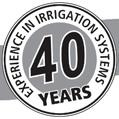



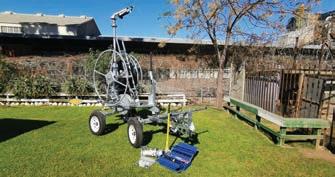
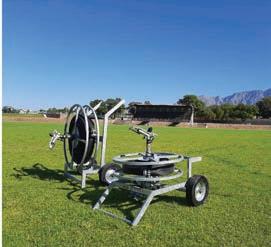



The most effective and cost efficient travelling irrigation systems availableHEAVY DUTY COMMERCIAL FARMING IRRIGATION RHINO 300 HEAVY DUTY COMMERCIAL FARMING IRRIGATION HOSE MASTER 50/100 PORTABLE IRRIGATION SYSTEM SPORTSMAN 120 SPORT FIELD AND GARDEN IRRIGATION

The agribusiness value chain is filled with various participants fulfilling unique and sometimes intersecting roles. They are all either producing goods or services for their customers or are active users of the goods and services. The success of their businesses and livelihood largely depends on being financial literate.
Financial literacy is the ability and confidence of an individual to use his/her financial knowledge to make financial decisions to improve their well-being. Unfortunately, despite improved access to the internet and other sources of information, financial literacy continues to be an area of concern for most agricultural value chain participants in Sub-Saharan Africa.
The Future Africa Forum (2023) states that, while there are some disparities in terms of economic and human development between African countries, most of the population in African countries have relatively low financial literacy levels. According to S&P’s Global Financial Literacy Survey, African countries score the worst in terms of financial literacy in the world. The most financial literate country is Botswana at 51% and the least is Somalia at 15% according to the survey.
Most African countries have agrobased economies, therefore if they could capacitate their citizens, especially agricultural participants, with financial knowledge it would further the growth of the agricultural sector and their economies as well.

Benefits of agricultural individuals

being financially literate include the ability to make better financial decisions, effectively manage money and debt, greater ability to reach financial goals, reduction of expenses through better monetary regulation, less financial stress and anxiety, increased ethical decision-making when selecting insurance, loans, investments, increased savings and improved retirement planning, and improved bargaining power.
The capacitation of individuals then increases activity in financial markets, aids individuals to choose the right financial products with confidence and increases awareness of consumer rights and regulatory interventions.
Not only do individuals benefit, but the financial system and economy
improve as well due to greater competition, innovation, and quality products. There is also improved market discipline, better coverage of risk, and the increase in the self-funding of retirement which reduces pressure on the government to take care of retirees.
A more financially literate agricultural community means more financial inclusion and an increased understanding of government financial policies which aids in collective decision-making.
Mitchell and Abusheva (2016) state the main challenges for financial literacy at the micro-level, meso-level, and macro-level are over deference to the financial industry, lack of financial knowledge, overconfidence about financial knowledge, lack of government initiatives, frameworks and regulations, lack of life cycle planning
and interesting and fascinating ways to teach financial literacy skills.
The improvement of financial literacy can only be achieved through the collaborative effort of government, the non-governmental sector, and the private sector.

According to Refera, Dhaliwal and Kaur (2015), roles of governments regarding financial literacy in developing countries include setting financial literacy policy and strategy, and organising and coordinating other stakeholders for efficient and effective financial education at national level. Evidence of developing countries undertaking policy level initiatives mean government agencies in the finance and education sector play an active role. Similarly, the ministry of education and schools, the media, information, and communication technology sector can also play a vital role in promoting financial education in developing countries.
Media, mobile money operators, and financial institutions can all play a role in improving financial literacy. The media could be used as a medium to spread financial literacy education. Ministries of education and government agencies should work with media houses to design and publish simplified and practical articles on financial literacy to educate the public and additionally, more airtime and newspaper space should be allocated to financial literacy education.
According to the Future Africa Forum (2023), with the rise of mobile money markets and digital financial services, operators are constantly interacting with clients. Mobile money operators could use their platform to promote SMS-based financial literacy courses to complement their existing products and services.
Lastly financial institutions such as banks, microfinance institutions, insurance companies, and asset management companies within the private sector can provide existing and potential customers with some educational material and tools to improve financial literacy. They can take it a step further by holding workshops on pressing topics such as savings, borrowing, managing finances, and much more. These same institutions can draw up financial literacy programmes which they can share to the general public through schools and non-profit organisations.
(2016) The actual challenges of financial literacy. Available at: https://www.shs-conferences. org/articles/shsconf/pdf/2016/06/ shsconf_rptss2016_01134.pdf
(Downloaded: 27 February 2023)

Financial Literacy: Preparing Africa’s Youth for The Future. (2023) Available at: https://futureafricaforum.org/preparing-africasyouth-for-the-future-financialliteracy/ (Accessed: 27 February 2023)
CFI Team (2022) Financial Literacy - The cognitive understanding of financial components and skills. Available at: https://corporatefinanceinstitute.com/resources/ management/financial-literacy/ (Accessed: 27 February 2023)
References
Hayes, A. (2022) Business Plan: What It Is, What's Included, and How to Write One. Available at: https://www.investopedia.com/ terms/b/business-plan.asp (Accessed: 27 February 2023)
Mitchell, J. W., Abusheva, M. E.
Refera, M. K., Dhaliwal, N. K., Kaur, J. (2015) Financial literacy for developing countries in Africa: A review of concept, significance, and research opportunities. Department of Commerce, Punjabi University Patiala, India. Available at: https://academicjournals.org/ journal/JASD/article-full-textpdf/7B4FCFE56826 (Accessed: 27 February 2023)
Animal feed is expensive. Farmers always strive to keep their animals fed with natural grazing and only supplement the nutrients that the herd may lack, instead of always feeding every animal for long periods of time. This guide will help you to determine how to prevent overgrazing and still keep your cattle in top condition.
Determination of livestock units per hectare
The size of a herd of cows may vary between 30 and 90. Usually, four camps per herd will be sufficient, but it is preferable that six to eight camps should be allocated per herd. Where six camps are allocated per herd and the size of the herd does not exceed 50 LSU’s, the size of the camps vary as follows according to the grazing capacity for that area:
should not exceed 1 000 metres. The more an animal has to travel, the more energy will be consumed and the more feed the animal requires.
Each cow should be mated only once a year.
Cows: 15 December to 15 March
Heifers: 5 November to 15 February
18 months should be the youngest age at which a heifer should be mated.
A point of 3 or more when the cows are in a positive phase of growth.
Heifers are selected at weaning age and again just before mating. Heifers that do not conceive should be culled immediately. It is recommended that more heifers should be mated than needs to be taken up in the herd (overmating). The correct replacement rate is 15%.
It is highly recommended that well adapted and tested veld reared bulls should be bought, especially if they can make a positive contribution to the herd. Buy a bull that is well adapted to local circumstances, and it must have good legs.
Make sure that the birth mass of the bull is low to prevent calving problems, especially when used on heifers. Make sure that the bulls are fertile, able and have a good libido.
The circumference of the scrotum is directly connected to fertility and therefore the circumference of the scrotum should be in the region of 340 mm. (This is only an average figure because the circumference of the scrotum is related to breeds).
If fewer than six camps are allocated per herd, the camps will inevitably be bigger, but the sizes of camps should preferably not exceed 250 hectares.
Watering points
One watering point per camp will be sufficient, provided that animals do not have to travel further than 2 000 metres. It is however preferable that the distance the animals have to travel to watering points,
If cows that did not conceive can be identified soon enough, a supplementary mating season during June/July may be introduced.
Adult cows will be ready for mating at a body mass of 400 to 450 kilogrammes. Heifers should be mated at the age of 24 months, except if they weigh 320 or more at the age of 8 months. However,
Weaners should be marketed at the age of 7 to 8 months. The desired weaning weight is 220 kilogrammes or more. At this stage the slaughtering percentage will be approximately 48%. At weaning, the calf should weigh 50% or more of his mother’s weight.
Implementing sound veld management and attempting to keep the veld in a top condition, can bring about huge savings in the fodder account. A cow that weighs 450 kilogrammes eats

about 13,5 kilogrammes of dry material per day, that is approximately 3% of her live body weight.

The supplementation of licks in terms of salt and phosphorus is essential and the farmer must attempt to satisfy the need. A cow needs to be supplemented with approximately 40 to 60 grammes of salt and approximately 6 grammes of phosphorus per day, and this supplementation should be supplied throughout the year.
There might be a deficiency in protein during autumn and early winter, and during late winter there might be a severe deficiency in both protein and energy.
It is recommended that 0,5 to 1 kilogramme of sulphur be mixed into every 100 kilogrammes of lick, especially when licks containing urea are supplied and where the possibility of prussic acid poisoning on shrivelled veld exists.

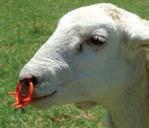
Protein supplementation may be considered on poor winter veld. Up to 20% of urea may be mixed into the licks to supplement the deficiencies. On good veld it will not be necessary to supplement energy. The better the veld, the more the savings on supplements.
It is recommended that cows should be vaccinated with vitamin A during late winter or six weeks before the mating season and again six weeks before the calving date.
Licks should not be supplied ad lib. Weigh the licks according to the needs of the animals and put out the correct quantities on Mondays and Thursdays. There must be enough troughs to make sure that all the animals have access to the licks. When urea is supplied, make sure that the troughs are protected against rain. Try to determine the lick intake per cow. The better the condi-
tion of the veld, the less need there will be for licks.
Identification is a form of record-keeping to determine ownership or to identify old animals and poor producers. By law it is compulsory that every stockowner should brand all his cattle over the age of seven months. Calves up to seven months may still be tattooed. Earmarks may be used for management purposes.
Production records are useful in determining the marketing mass of animals and also to determine the kilogrammes of meat produced per hectare.
Production records will be needed to determine the weaning percentage. These records provide an indication of the efficiency of the farming enterprise.


Financial records are essential to determine the overall efficiency of the farming enterprise and will also ensure that expenses are according to income. Examples of financial records are the balance sheet, monthly income and expenses, cash flow budget and the cash flow statement.
General records like the inventory of land, improvements, vehicles, tools

and livestock are important to draft an accurate balance sheet. It is also very important to keep records of stock numbers on a daily basis because it is a handy aid in solving stock theft cases and also for stock theft statistics.

Agricultural production systems are quite diverse and encompass a variety of interesting products and services. Some of these production systems seem unfathomable due to their rarity and lack of coverage, characteristics which keep agriculture all the more interesting. One of these production systems is heliciculture.

Heliciculture is the process of raising edible land snails for human consumption. The snails can also be utilised for medicinal purposes, in gastronomy, cosmetics or as food for reptiles. Escargot shells can be sold for decoration purposes and more recently snail eggs are being produced to enjoy as a type of caviar.
According to Rygało-Galewska, A, Zglińska, K, Niemiec, T (2022), although the beginnings of snail breeding go back to 50 BC in Rome, they gained popularity again only in the last century, on a large scale, thanks to the development of gastronomy. Snail farming has developed significantly in modern times due to the food safety aspects of acquiring wild individuals that bioaccumulate heavy metals in their tissues, including cadmium and
lead, and toxic products of agricultural origin. Additionally, in snails raised on farms, fewer Escherichia coli, Enterococcus pp and Salmonella bacteria were detected.
According to estimates, in 2016, the consumption of snails in the world amounted to 43 000 tonnes, and the increase in consumption by 2025 is predicted at 50 000 tonnes. The largest meat consumption is recorded in Spain, Morocco, France, and Portugal. Morocco played a key role in the producer market in 2020 (15,6% of world exports), Lithuania 8,6% and Romania 7.5%. The largest importers of snails are France (25,3% of world imports), Spain (21,6%) and Romania (8,5%).
African countries involved in snail breeding include Nigeria, Tunisia, Algeria, Cape Verde, Equatorial Guinea, Ghana, Cameroon and South Africa, to mention only a few.

Heliciculture poses various production advantages. The snails are easy to breed and their breeding does need large amounts of capital to begin production as they reproduce very fast. Snails lay eggs in clutches which hatch in 28 to 33 days. The capital, technical,

labour and financial inputs required for the systems is less than that required for instance in livestock production.
Heliciculture needs relatively little space for maintenance, both in the field and indoors. The snails emit very little greenhouse gases and pollutants into the environment, and are easy to incorporate into organic farming, which is a growing sector as healthier products are being sought after.
On the other hand, without expensive artificial means of climate control, snail farming is restricted to the humid tropical forest zone, which offers a constant temperature, high relative humidity, preferably no dry season, and a fairly constant day/night rhythm throughout the year.
Consumable meat makes up only 40% of the snail's total live weight. Consequently, snail farming is not a way to make money quickly, as not all individuals eat snails. The snails also grow as slowly as they move.
One of the first steps in snail farming, is site selection. Snails are adept at escaping from enclosures, therefore it is important to construct escape proof housing. Other main factors to
consider during site selection are the climate, wind speed and direction, soil characteristics, protecting the snails from diseases, predators and poachers.

Snails are cold-blooded; they thrive best in areas with moderate temperatures and high humidity. In their natural surroundings, snails go into dormancy during the dry season. Relative air humidity should not be near saturation, because it would encourage the development of harmful bacteria and fungi. In outdoor situations, it is clearly impossible to control climatic factors.
However, the magnitude of temperature and humidity fluctuations is reduced in areas of relatively undisturbed forest or fairly dense vegetation cover. Such sites should be preferred to open grassland or farmland areas. Obviously, snails can be reared in a completely controlled, indoor environment, but at a price. Whether the investment will be profitable depends on one's financial resources, local production costs per kilogramme of snail meat, and marketing options.

Wind accelerates moisture loss in snails. To prevent snails from drying out, snail housing should be situated in sites that are protected from the wind. Downhill sites are usually the most suitable, preferably those with good tree cover to reduce wind impact. Planting (fruit) trees around snail pens will help to reduce wind speed and
improve the micro-climate. It will also protect the snails from scorching sun or torrential rain.



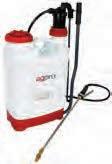
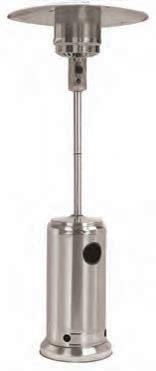


Soil is a major part of a snail's habitat. Soil composition, water content and texture are important factors to consider in site selection. The snail's shell is made up mainly of calcium derived from the soil and from feed, and snails derive most of their water requirements from the soil. Snails dig in the soil to lay their eggs and to rest during the dry season. Considering the above, it is essential that the soil is loose and that its calcium and water content is high.
References


Rygało-Galewska, A., Zglińska, K., Niemiec, T. (2022) Edible snail production in Europe. Available at: https://www.mdpi.com/20762615/12/20/2732
Hecilicultural Entrepreneurship. Available at: https://www.turkeytrainings. com/heliciculture






Snail farming startup guide. Available at: https://www.agri4africa.com/ snail-farming-startup-guide/


A practical approach to backyard snail farming. (1998) Available at: https:// www.ajol.info/index.php/njap/article/ view/124545
Akharume, C. O., Alao, B. O., Eyinade, G. A. (2019) Costs and returns analysis of smallholder snail production in south western Nigeria. Available at: https://serialsjournals.com/abstract/21186_chap-2_celestine_ohi_ akharume-chapter_2.pdf
Ngenwi, A. A., Mafeni, J. M., Etchu, K. A., Oben, F. T. (2010) Characteristics of snail farmers and constraints to increased production in West and Central Africa. Available at: https://idlbnc-idrc.dspacedirect.org/bitstream/ handle/10625/48747/IDL-48747.pdf








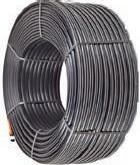

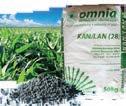
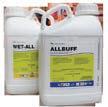













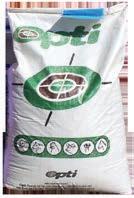
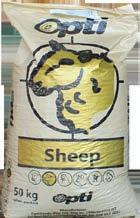


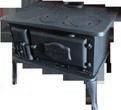




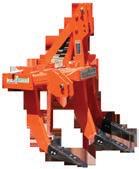

“With clever management a natural water source can be used sustainably throughout the year, depending on whether the number of game species is limited, and the drinking points are well distributed,” says Ken Coetzee of Conservation Management Services in George in the Western Cape province of South Africa.

The incorrect placement of water points can lead to overgrazing, bush encroachment, and soil erosion. It can also have a negative effect on shy species that do not like the company of other species when they drink.


Ideally, watering points must provide enough water to be sustainable. The preferences of the species must be kept in mind, the water must be permanent and controllable, the quality must be acceptable, and wastage must be minimised. Sufficient shelter, without providing a hideout for predators, must be available. The placement of watering points should not lead to overgrazing, be as natural as possible, and be accessible for ecotourism.
For extensive game farming practices, it is important to use the most natural water source, whether it is a spring, a wetland, or a stream. For intensive farming, water must be supplied in drinking troughs that are regularly filled, cleaned, and maintained.
Three principles can be used as a guideline:
• Prevent game from trampling the area surrounding the natural water source such as the eye of a spring, a wetland, or a riverbank;
• Place watering points where drinking animals will not destroy sensitive habitats or vegetation cover;

• Make provision for smaller game, such as small antelopes, rabbits, tortoises, and birds to drink safely. The placement of artificial watering points must keep environmental aspects in mind, such as the sensitivity of the veld between the water points to prevent the erosion of game paths, the availability of seasonal pans of water, and the watering needs of the different game species.
Ken says: “Often a network of watering points is positioned without taking in the landscape into consideration. Clever placement will avoid cutting off the habitat that is dependent on the water from the source.”
Keep in mind when planning watering points
• Avoid areas on a slope where game can trample the area around the watering point, causing the water to run off and cause erosion;
• Do not place a watering point under a tree where leaves, pods, insects, and bird droppings can contaminate the water;
• Do not place the watering point in an overgrown area – most game
prefer an open site where they can see an approaching predator;
• Do not place it on a rocky slope, as most animals dislike walking on a smooth, hard surface;
• Place watering points along a stream lower down the valley where the vegetation, such as grassy patch, will not easily be trampled;
• Do not place the watering point in the middle of a stream, because it will silt up or fill up with vegetation when the waterway is in flood;
• Do not place it where the earth will be trampled to dust, rather place it on well-drained sand or gravel;
• Keep it away from areas where rare and endangered plant species occur, such as patches of quartzite where succulents grow;
• Do not place it in areas that are already overgrazed and trampled.
Springs
Protect the eye of the spring by building a simple protective structure of stones or bricks over, it or fence it off to prevent game from trampling it. Relay the water by means of a pipe to a nearby place where game can drink.
Waterways
In natural waterways, such as rivers and streams, provide drinking places where the riverbank safely permits it. However, where the water is accessible, it can cause many game species to congregate there and trample the bank. When the river is in flood, it can wash away part of the riverbank and the adjacent veld.
Repair a riverbank in time to prevent erosion by:

• Fencing off that part of the riverbank to force game to drink elsewhere – the fence must keep out animals that can crawl or dig underneath or jump over it

• Sloping a steep riverbank to help animals reach the water
• Diverting the water away from the river to where game can drink without destroying the riverbank
• Using gabions or groynes to divert the water away from the eroded riverbank
Groundwater can be utilised for game by means of a borehole in a suitable place and providing it with a pump that will bring water to the surface. Different options exist:
Windmills: The size of the wheel of the windmill will depend on the depth of the borehole and the quantity of water that must be brought to the surface, as well as the distance the water must be pumped and at what incline, and the power of the prevailing wind.
As with a windmill, a solar pump provides clean energy. The electric pump is powered by means of solar panels and provides enough water for game, even on a cloudy day. The pump and panels are light enough to move between watering points.

Electric pumps are environmentally friendly and work well where a lot of water is needed for crops, but an expensive electrical connection is needed.
Pumps powered with diesel or petrol are expensive, but necessary where a large quantity of water must be pumped over a large distance and uphill. Unfortunately, it is not very environmentally friendly as it releases toxic fumes into
the atmosphere, leaks can end up in the groundwater, it is noisy, and the pumps must be serviced regularly.
The harvesting of rainwater is essential where no surface water occurs, where it is too expensive to pump groundwater, or where fences keep game away from watering points.
Rainwater can be harvested from any level surface with a slight decline, whether a rocky slope or a structure. Rainwater flowing downhill is collected in a storage tank and piped to a watering point. The volume of water in the receiving trough can be regulated by means of a ball valve.
“The drier the area, the bigger the volume of the storage tanks in order to store enough rainwater to last the game throughout the dry season,” explains Ken.
A low wall surrounding the rocky slope can be used to direct the water to a gutter which leads the water to a pipe that flows into the tank. A concrete slab can be installed on which to collect the rain-

A gentle slope to a riverbank gives access to animals that need a drink.

(Source: Pixabay)
water, or a thick layer of plastic sheeting on gravel will have the same effect, but heavy animals will damage the plastic.
Inexpensive tank mould
A mould made of sheets of corrugated iron that is bolted in place can be used
again and again to build a tank. The mould is covered with chicken wire on the outside before it is plastered with cement. Once the cement is dry, the mould is removed, and the inside of the tank is plastered. A domed roof will prevent the water from evaporating.
Earthen dams
The same volume of water that flowed down the stream before the dam was constructed, must be released after the dam has been built. A deep earthen dam can be home to hippos, while the banks covered with natural vegetation such as reeds and bulrushes, will provide the ideal habitat for waders, turtles, and numerous other wildlife species.
Contact details
Contact Ken Coetzee at (+27) 76-227-5056 or consken@mweb. co.za or visit the website at www. conservationmanagementservices for more information, or to get a copy of his book.
References
Gouws, A. (2021) Water vir wild: gehalte is net so belangrik soos beskikbaarheid. Agri Orbit/Veeplaas https://agriorbit.com/water-virwild-gehalte-is-net-so-belangrik-asbeskikbaarheid/






Once a year, usually in late summer, depending on rainfall and forage availability, honey is harvested from the hives.
In Part 9 we learned that the hive consists of the brood chamber and the super chambers. The bees build their comb onto the wooden frames that are fitted into the super chamber. They store honey in the cells and cover the full cells with a cap of wax. Capped honey is known as ripe honey.
Since extracting honey is quite an involved process, which includes removing the frames from the super chamber and scraping off the wax cappings before the honey can be extracted, the job is usually attempted only once a year and then only when surplus honey is available in the super. Remember
that a colony needs about 60 kg of honey a year to survive, so do not remove all their food until you are sure they have sufficient for themselves.

The extraction of honey refers to the removal of honey from the honeycomb so that it is isolated in a pure liquid form.

Usually, the bees store the honey in a honeycomb which they build from wax on the wooden frames which are vertically inserted from the top into the super chamber(s).
The honey is normally harvested in the late summer when most of the cells on the supers will be filled with honey. On a filled frame, the cells will be capped over by the bees for storage. These are the frames from which you can harvest honey.
Centrifugal extraction is most widely used by beekeepers to remove honey from the combs. This type of extraction is suitable with vertical hives, which are normally furnished with frames with artificial support, such as wires that hold the wax sheet in position.
The first step in the extraction process is to break or remove all the cappings. This can be done using an automated uncapper machine, but the non-commercial beekeeper with only a few hives will remove the wax manually with a capping knife and or pronged capping fork.
To help the process, the knife is often heated. The combs are held at an angle over a dish and cut off with a hot knife.
The cappings are rich in honey, which can be slowly drained off with a bit of heating to melt the wax without heating the honey excessively. The cappings are often used to make candles or other wax products, or recycled into sheets of foundation to use again.
Some beekeepers also harvest the propolis before uncapping the combs. Propolis, the resinous material that bees gather from plants to glue the frames together, is used for its medicinal properties.
The uncapped frames are then placed in a honey extractor, which spins them to remove the honey from
the cells by centrifugal force. The frames must be correctly loaded to ensure the honey flows out of the cells during extraction.
The extracted honey will contain bits of wax and must be filtered through a screen to remove it and then settled in a settling tank to provide clean, clear liquid honey.


Not all honey is suitable for harvesting. Crystalised honey is left on the frames. Also, any uncapped honey will be impossible to spin out and must be left in the hive. Only hives that are at least 50% capped should be harvested.


The extraction process is typically done inside a specialised room, or honey house that is equipped with all the necessary tools and that can be easily cleaned. It helps if the room is heated since hot honey flows faster. The smallscale beekeeper will not necessarily have the luxury of a honey house, but any space that can be used to harvest the honey and can be properly cleaned up afterwards to keep honey-loving creatures away, will be suitable.

Different plants visited by the bees to collect nectar will result in different colours of honey. Bottle the different kinds of honey separately where possible and label the bottles accordingly.
If you have a small amount of honey, use recycled glass bottles for your own use and for sale to neighbours and at a local market.
When you have more honey and want to sell it more professionally, you can use glass bottles which can be recycled as used glass. There are also plastic squeeze bottles available for sale.
You can also sell honey in bulk in larger containers to somebody who will probably fill smaller jars and mark up the price.
There are many ways to distinguish your honey from others. Some beekeepers include neatly cut honeycombs into their jars of honey, which is called chunk honey. Others market their honey as raw or unfiltered, where no extra heating of the honey has been done. Choice-grade honey is the other option.
You can design and have your own labels printed to stick on the jars. The labels must clearly state the type of honey, such as eucalyptus or fynbos honey, your name and contact details, and how much honey the jar contains. Check with all the labelling requirements as stipulated in food labelling legislation.
If you have a lot of honey on a regular basis, you can market your honey

online. Lots of people also market on Facebook Marketplace.
To determine the price of your honey, you can check prices for online honey sales on Google, at your local market or at country fairs. If you can not afford a market stall at a country fair yet, you can ask an existing seller to share his or her stall for a percentage of your sales. You can benefit from the existing clients, and your honey can in turn attract new customers.
According to the Agricultural Pests Act, 1983 (Act No. 36 of 1983) – Control Measures R858 of 15 November 2013 relating to Honeybees, any person who keeps, owns, or is in charge of a colony of honeybees, whether for commercial, purposes, as a hobbyist or as a bee removal service provider, is legally required to register annually with the Department of Agriculture, Forestry and Fisheries (DAFF) as a beekeeper between 1 January and 31 March of each year. You can find the registration form here: https://www.bhive.co.za/ daff-beekeeping-registration/
The South African Beekeeping Industry Organisation (SABIO) is an organised body representing the beekeeping industry in South Africa.
It represents beekeeping interests at national level. It acts as the representative of the beekeeping industry in dealings with the government, presides
as a consultative spokesperson on all forums affecting the industry and agriculture, and strives to set and maintain world-class standards in apiculture.
All associations and interest groups should be registered with Sabio and submit to the regulations in the interest of the industry. The Sabio website contains a wealth of information on legislation for beekeeping in the country.
Sources
Anderson, R.H., Buys, B., Johannsmeier, M.F. (2014). Byeboerdery in Suid-Afrika. Department van Landbou-tegniese Dienste Bulletin no. 394, 1978. Hersiene uitgawe.

Beekeeping Associations. Sabio https://sabio.org.za/beekeepingassociations/
Blackiston, H. (2021) How to Brand and Sell Your Own Honey. Beekeeping for Dummies https://www. dummies.com/article/home-autohobbies/hobby-farming/beekeeping/how-to-brand-and-sell-yourown-honey-188387/
How To Sell Your Honey for Profit
(Plus Tips for Success). (n.d.) Backyard Beekeeping https://beekeeping101.com/how-to-sell-honey/
Legislation. Sabio https://sabio.org. za/legislation/
60% of Africa is farmland. It represents a big stream of income for smallholder farmers and gross domestic product revenue for many African countries. In fact, agriculture contributes 23% to the continent's GDP. To ensure that the farmland is productive, dependence on rain for irrigation can be reduced by installing irrigation systems.
Although irrigation in Africa has the potential to boost agricultural productivity by at least 50 percent, food production on the continent is almost entirely rain-fed. Currently, the area equipped for irrigation is barely thirteen million hectares — only six percent of the total cultivated area.

As more and more fields are irrigated, the use of automated irrigation systems cannot be overlooked. Automated irrigation systems first appeared in July 1949 when Frank Zybach applied for a patent on his 'Zybach SelfPropelled Sprinkling Apparatus'.

Generally, Automated Irrigation Systems (AIS) work by continuously monitoring soil moisture content and wirelessly triggering pipeline valves to
the minimum threshold for the cultivated crop. Once the soil moisture content is above the maximum threshold, the system deactivates irrigation pipeline valves, which close and stop irrigation.

The AIS is customisable and can also be used to upgrade existing drip irrigation systems, surface irrigation systems, and sprinkler irrigation systems to overcome their limitations.
Automation can be used to:
• Start and stop irrigation through supply channel outlets.
• Start and stop pumps.
• Cut off the flow of water from one irrigation area and direct the water to another area.
Benefits of automatic irrigation include:
• Reduction in labour costs.
• Timely irrigation.
• Improved management of water flow rates.
• Precise cut-off of water compared to manual inspection.
• Decreased run-off of water and nutrients plus reduced costs for vehicles used to check irrigation.
Disadvantages of automatic irrigation are:
• The high costs for purchasing, installing, and maintaining the equipment.
• Unreliability of the irrigation system due to lack of operational skills.

• The increased maintenance of pipes, valves, and equipment to ensure it is working properly.
AIS can be categorised into four systems: pneumatic system; the portable timer system; the timer or sensor hybrid system, and the supervisory control and data acquisition (SCADA).
The pneumatic system works through a permanent system activated by a bay sensor located at the cut-off point. As water enters the sensor, it pressurises the air, which is channelled to a mechanism that activates the opening and closing of irrigation structures.
The portable timer system (PTS) is a provisional system that uses electronic clocks to activate the opening and closing of the irrigation structures. As the PTS is portable, four or five components are commonly acquired to move all over the place.
A timer or sensor hybrid system is one comprised of a hybrid of portable timer and sensor systems. Like a portable timer, it uses an automated device to trigger the opening and closing of the irrigation structures.
This system has an additional feature of the irrigator being able to place a moveable sensor down the bay. When the moveable sensor comes in contact with water, it transmits radio signals to the timer devices at the outlets to open or close the structures. Afterwards, a radio message is sent to a receiver to let the landowner or farm manager know that the water has reached the cut-off points.
Supervisory Control and Data Acquisition (SCADA) comprises a personal computer and software package to schedule and control irrigation via a radio link. Signals are sent from the computer to control modules in the paddock to open and close irrigation structures with linear actuators. Bays are opened and closed according to set times.
Some systems can automatically alter the time a bay outlet is open if the channel supply is inconsistent. One feature of SCADA systems that distinguishes them from the other systems, is being able to start and stop irrigation pumps and motors.
The application of AIS in SSA may seem far-fetched, but more and more farmers are becoming familiar with modern operational technologies by adopting the use of new efficient ways of operation to improve the financial performance of the farming enterprise. Thus, it will not be surprising to note an increased application of such systems.
Reference list: Goedde, L., Ooko-Ombaka, A., Pais, G. (2019) Winning in Africa's agricultural market. Available at: https://www. mckinsey.com/industries/agriculture/ our-insights/winning-in-africas-agricultural-market
World Economic Forum (2022) How Africa can feed the world. Available at: https://www.weforum.org/agenda/2016/01/ how-africa-can-feed-the-world/
AGRA (2022) Irrigation doubles African food production. Available at: https:// agra.org/irrigation-doubles-africanfood-production/
Frank Zybach (2022) National Inventors Hall Of Fame. Available at: https://www. invent.org/inductees/frank-zybach
AIS Technology. (2022) Smart Irrigation Solutions. Available at: https://aistechnology.mt/smart-irrigation-solutions/
Automation of Irrigation Systems and Design of Automated Irrigation Systems Available at: https://www.eajournals. org/wp-content/uploads/Automation-ofIrrigation-Systems-and-Design-of-Automated-Irrigation-Systems.pdf
Agriculture Victoria (2022) Automated Irrigation. Available at: https://agriculture.vic.gov.au/farm-management/water/irrigation/automatic-irrigation
Morgana, S. (2020) Why use SCADA for your irrigation systems. Available at: https://www.dpstele.com/blog/why-usescada-for-your-irrigation-systems.php

In industry and trade, the term "raw silk" typically refers to raw mulberry silk. Reeling is a technique for extracting the silk filaments from cocoons to weave them together to create compact, untwisted, and degummed silk thread.

To reel raw silk, you have to find the right end of the cocoon filament and join a few ends together. A reeling machine is used to unwind the silk filament from the cocoon. In all cases the process starts with cooking the cocoons and keeping them in a basin with warm water.

Cocoons can be reeled in directly on standard reels or indirectly on small reels. The reeling machines' water temperatures are optimised for the type of appliance, water, and cocoons.
The reeling basin and reeler receive cooked and brushed cocoons with filaments. Clear filaments are tied to a reel bench hook near the reeling basin.

There are several ways to reel silk:
1. Traditional charka
The Indian cottage reeling industry uses the charka, a manually operated reeling machine. Charkas are usually installed in backyards or in simple, roofed shelters.
Charkas have mud platforms, distributors, and reels. The dimensions are usually 60 x 120 cm with a 90 cm-high mud platform that is rectangular in shape with a basin that covers the builtin fireplace. This basin, which is a 45 to 50 cm oval mud pot or copper vessel, cooks and holds the silk cocoons. The reeler sits on the mud platform, which covers the basin to its brim.
The basin has a metal thread guide (tharpatti) with apertures. It is securely attached to a thin, long stick leaning against the front edge of the mud platform near the basin.
Firewood or dry twigs are burned to heat the basin water in the fireplace or oven. Paddy husks and peanut shells are used as fuel in some places, and a chimney vents smoke.
A wheel on a vertical axis drives the wooden traverse rod in a distributor. The traverse rod is parallel to the platform's front and 20 to 25 cm away. The reel's cord belt drives the wheel's constricted part. The traverse rod has regular wire loops to guide threads to the reel. The traverse rod rapidly crosses the reel's silk while reeling.
Each reel holds four ends. The cocoon ends are collected with a stick
Cooked and brushed cocoons with filaments enter the reeling basin and reeler. A reel bench hook near the basin holds clear filaments. (Source: blog.paradisefibers.com)
after cooking the floss. The charka gathers the cocoon filaments in one hand and passes them through the tharapatti. After passing through the tharapatti, two threads are crossed and fed to the charka reel through the distributor guide. A separate turner manually rotates the thread on the reel.
Cooked and brushed cocoons with filaments enter the reeling basin and reeler. A reel bench hook near the basin holds clear filaments. (Source: blog.paradisefibers.com)
Due to its uneven denier, this reeling method cannot produce high-quality silk. Since cocoons are kept in large numbers at high temperatures in the basin, reeling cannot be maintained uniformly. This method reels in even inferior cocoons, resulting in inferior silk.
The Charka gives a higher silk yield and a lower renditta (the number of cocoons needed to produce 1 kg silk). (Source: YouTube by Our Collection)
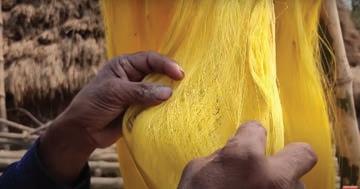
The disadvantages are that the boiling and reeling processes cause the basin water to become dirty and coloured, making the raw silk dull. Therefore, the reeler must refill the basin four to five times a day and these breaks result in loose ends.

a. Domestic Basin

The domestic basin improves raw silk quality to compensate for charka reeling system flaws. The domestic basin unit has two reeling basins and one cooking basin on a convenient height platform. To cook and transfer cocoons to the reeling basin, the cooking basin is placed directly in front of the tworeeling basin unit. The reeling basin receives cooked cocoons from singlepan cooking.
Croissureangle
Distributor Guide
ABC-Croissure Wheels
Croissure
Threadguide

Baloon
Cluster (Rose) of Cocoons

Reeling Water Reeling Basin
Cottage basins are widely used in reeling, and the cooking unit has three or four basins in a row. Cooking does not disturb reelers, and the table holds 4 to 6 reel basins.
Copper sheet reeling basins measure 45 x 25 x 7,5 cm. A tap from the cooking unit's water drum supplies hot water for the reeling basin. The transmission shaft, drive wheels, and croissure frame are made of wood or iron.
Each basin reel has four to six ends. Each basin has jettebouts for filamet attachment. Each basin has its own travellette croissure frame. The reel frame is a one-metre-long, angle iron or wooden frame parallel to the reel bench.
Reel benches are 150 to 170 cm tall from the ground, so the knotter can move freely in the passage and knot threads. Drive wheels on a transmission shaft turn the power reels. The
transmission shaft has a handle for reel rotation and a traverse mechanism with gears and a cam to move the traverse bar.
This multi-end basin is slightly better than the domestic basin. The cottage basin has small overhead reels and rereeling equipment. The rest resembles a domestic basin machine.
3. Multi-end reeling basins
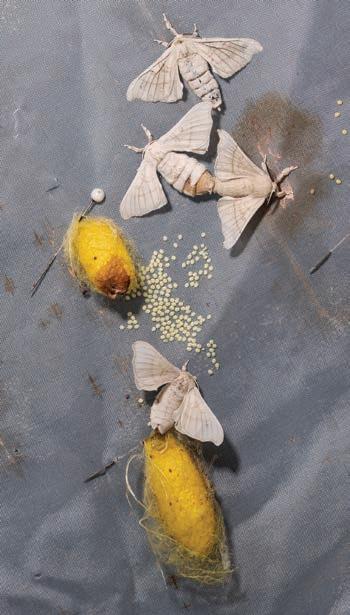
Multi-end reeling machines produce thread on small reels at a slow speed. Reeling slowly breaks the thread, resulting in less waste and easier



Beneficial microbes
re-reeling. It helps make better silk mechanically, and the reeling does not strain the reeler. This reeling technique has revolutionised design and operation.
The multi-end unit automatically cooks cocoons. The reeling unit has two parallel rows of basins with small overhand reels. The reel bench is tall enough for workers to sit on stools and reel.
Deep rectangular reeling basins with a copper and tin interior, 10 to 12 cm wide are used. Jetterbouts with equal reeling ending in each basin, an overflow drain, and a travellette croissure are all required. Reels on the multi-end machine range in diameter from 60 to 75 cm.
The light metal or hard frame machine has six hard wood reel bars. Each reel has a round stainless steel or brass rim around the reel bars.
Connecting gears from the main shaft drive the reels over a carrier shaft. A mechanical brake on the shaft stops all reels when needed. Each reel has a stop motion device that automatically stops when encountering large slugs and waste in raw silk thread.
All reeling machines have porcelain button thread guides with a tiny thread aperture. It has speed regulators, and the vibration-free machines last longer. The multi-end machine improves reeled silk quality, productivity, and waste.
References
CGSpace. (2007). Sericulture in East Africa. Japan Association for International Collaboration of Agriculture and Forestry. Available at: https://www.jaicaf. or.jp/fileadmin/user_upload/publications/FY2007/ report-2007_1_e.pdf

Agarwal, A. (2014) 1 silk reeling, Academia.edu. Available at: https://www.academia.edu/7988066/1_ SILK_REELING
Fulvates
Amino Acids
Scientifically proven to improve soil and plant health
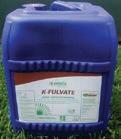




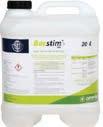
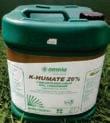



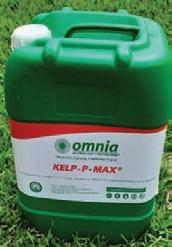
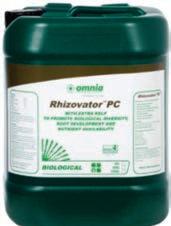
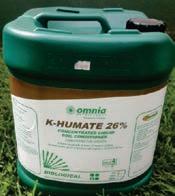

Humates

Microbial and NonnMicrobial biostimulants


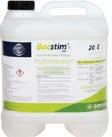
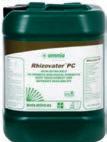
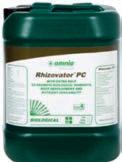
Kelp
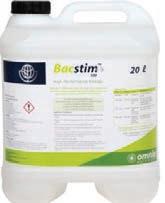




milk. Being able to do this efficiently is a great benefit on a dairy farm,” says Ludo Bols, Feeding Systems Specialist at DeLaval. “By including the OptiWagon as part of the Optimat system you have an efficient and flexible feeding system that can help to save valuable time and limit energy costs on farms,” Ludo says.

DeLaval stands by its concept of having separate products for mixing and cutting, and distributing the feed. “This way we develop the product to do the job it is meant to do in the best possible way,” says Ludo.
Capable of providing various animal groups with a different feed mix up to 12 times a day, the recipes and routes are set up and adjusted via the firm’s DelPro farm management system.
DeLaval says that the Optimat system is installed on more than 600 farms, mainly in Europe. Described as simple and effective, the standard version is suitable for feeding 120 to 130 cows. The master version is a fully automatic feeding solution for dairy herds of up to 1 000 animals. (Source: Delaval.com)
Therange of DeLaval robots is now being expanded with an autonomous feed distribution robot – OptiWagon. Feeding is one of the biggest costs on a dairy farm and, in addition, the most labour-intensive activity after milking. DeLaval is launching the new robot as a module in its complete automated feeding solution, DeLaval Optimat™.
This total feeding solution provides everything from weighing, cutting, and mixing to delivering the feed to the feed table. It will be available in most European markets shortly.
This latest robot is designed as a module for use with the firm’s Optimat stationary automatic feeding system. This mixes the ingredients, which are then conveyed into the tub of the OptiWagon for feeding.
“The new feed distribution robot helps to optimise the conversion of the roughage dry matter into

Valtra’s rewarded Q Series was released last year
Valtra celebrates another achievement as their Q Series ‘Beast’ received the prestigious Red Dot Award for Product Design. The announcement comes less than six months after their newest tractor, the Q Series was released. The new series suits the higher horsepower segment.
The Q Series was released in September 2022, and quickly garnered industry attention, picking up the Farm Machine 2023 Jury Award at the SIMA show in Paris, last November. The Farm Machine jury praised the Q Series for its agricultural contractor focused approach.
At 171 to 227,5 kW (230 to 305 hp), the Q Series fills the gap between Valtra’s T Series and their S Series. In test drives, customers have praised the Q Series’ smooth CVT transmission, manoeuvrability, and high level of visibility for such a high-horsepower tractor. To achieve this, careful consideration has been given to the design of the Q Series.

Industrial Design and User Experience Department Lead, Kimmo Wihinen, explains that the best tractor experience comes from listening to the customer: “Customers have been asking for a
bigger T Series. We have delivered a completely new tractor. Large farms and agricultural contractors need an efficient higher horsepower tractor but with good manoeuvrability and visibility. Everything from the easy access via the aluminium steps, the all-new powerful integrated front work lights, cab comfort, new roof design, and easy-touse, fully integrated technology via the SmartTouch user interface, responds to customer feedback. Everything is designed to make the Q Series a comfortable, and well-equipped tractor. It is the best tractor we have ever designed and built here in Suolahti in Finland. We are very happy that the Q Series continues Valtra’s history of winning Red Dot Design Awards.”
Valtra’s previous successes with Red Dot Awards included an award for the T Series in 2016, an Honourable Mention for the N Series in 2017, a win for the A Series in 2018, for the G Series in 2021, and, more recently, a Red Dot Award for the N Series in 2022.
Valtra’s Q Series will be on the road heading to various locations across Europe as part of Valtra’s SmartTour 2023. (world-agritech.com)
Drones can be very useful tools for farm security and crop protection, but short work times with manual intervention due to limited battery power is problematic. Dock-One is Skydock Systems’ automatic drone battery swapping and mission planning solution for DJI Mavic; with other drones to follow shortly.
Dock-one is an affordable drone battery swapping station developed in South Africa for the local and international market.
It allows you to fly drone missions 24/7 in an automated fashion.
The docking station design was incubated by Roelf Diedericks and Wikus Combrinck during the COVID-19 pandemic, when a family farm near Mabalingwe Game Reserve in the Limpopo province of South Africa was struck by a spate of night-time burglaries in the surrounding lodges. Manual patrols by the reserve, using a thermal drone, resulted in several arrests, and served
as a deterrent for would-be criminals reducing security incidents by 99%.
The challenge with staff needed for manual drone surveillance and manual battery swapping is solved by the DockOne docking station.

Paired with the DJI Mavic 2 Enterprise drone, DockOne allows you to automatically patrol day and night, and using the drone’s accessories such as the spotlight, or loudspeaker, nefarious activities can be stopped in its tracks.
Drones used for crop monitoring and protection in orchards will also be able to continue with their work non-stop.

Using the SkyDock/Flight Now system, you can create automated missions and monitor the drone from a centralised location over the internet.
The DockOne solution comprises three components, the DockOne docking station, FlytNow mission planning and remote-control software, and the DJI Mavic 2 Enterprise drone.
DockOne quick info
• Quick battery swapping docking station.
• 5 batteries on constant charge.
• Weather resistant enclosure, 200W thermo-electric heating and cooling.
• Built-in camera for remote monitoring.
• External LED landing light support.
• 2 x 12v back-up batteries for safe landing in power-outage situations.
• Automated precision landing.
• Dual extended range drone antennas (up to 10 km)
• Built-in 4G/LTE, WiFi, or Ethernet Internet router.
• Remotely accessible dashboard.
• Dimensions (H x W x Depth) : 690mm x 970mm x 920mm

• Weight: 70kg
• Material: Mild steel, powder coated.
SkyDock Systems is a division of ByteHeavy Industries (Pty) Ltd, a South African based software and robotics engineering firm. For more information, visit https://skydock.systems/ dock-one/.
 The Skydock automated battery changing system for drones was developed in South Africa.
The Skydock automated battery changing system for drones was developed in South Africa.
Farmers
The Swedish innovation platform, Agtech 2030, hosted by Linköping University, has created a digital control room for agriculture. It is called the Agtech Dashboard, AGDA for short, and includes digital twins of farms.
Martin Stenmarck at the technology company HiQ says: “Farmers today have many systems to manage: tractors, machines, milking robots, and silos. Although some integration of the systems has been done, there is still more to be desired. Furthermore, userfriendly interfaces are often missing.”
Fredrik Gustafsson, professor of sensor informatics at Linköping University, says: “We have been inspired by the needs of park rangers in Kenya. In the Ngulia project, new technology was developed for increased protection of rhinos. It is about digitisation, appbased field reports, sensor networks and positioning systems. A central part
has been positioning and movement analysis in real time. We have now transferred and adapted this to the Swedish agricultural context.”
The team has tested advanced functions in the model, for example maps where you can see exactly where each cow has gone in the last 24 hours.
The team has also created digital twins. The idea is that the farmer should be able to bring up the entire farm as an interactive 3D model.
The model will enable a farmer to get a good overview of his farm and he can more easily plan the work with his team. The information is visual and easy to absorb, you can even see it through VR glasses.
Mikael Pettersson, Farm Manager at Rotenberg Manor and part of the team behind AGDA, comments: “The 3D model consists of two models, one overview that includes the fields, and

one that focuses on the farm centre. Through this, you can quickly and clearly point to something you want to discuss, for example which solar cells need to be fixed. It will be easy to plan the work and coordinate tasks.”
Oscar Hoffmann of Linköping University, who created the 3D model, explains: “The model is based on approximately 4 000 still images photographed with drones, as well as images from the ground with a hand-held camera to capture details. The compilation of the images into a 3D model is called photogrammetry. The 3D models also have focal points. Clicking on them brings up photographs and in some cases video in real time.
“This concept gives a foretaste of how future farm management will be possible,” Per Frankelius, Innovation Leader in Agtech 2030 concludes. (world-agritech.com)
 can now manage their farms remotely by using 3D-technology.
can now manage their farms remotely by using 3D-technology.

